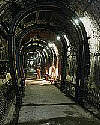
On 7 Dec 1869, the Thames Tunnel between Rotherhithe and Wapping in London, the world's first tunnel under a navigable river, was re-opened with the East London Railway line. Work had started on 2 Mar 1825. Excavation was engineered by Marc Brunel, for which he invented the tunneling shield to reduce the danger of collapse while digging through soft sediments. Beginning his own engineering career, his son Isambad Brunel assisted. They persevered through 18 years, including floods, human disasters, and delays caused by financing difficulties. Planned ramps for use by carts and freight traffic were never added due to cost, but it was opened for pedestrian use on 25 Mar 1843. The later installation of rail service became a well-used transport route across the Thames, which has continued in use to the present day as the oldest part of the London Underground.
If you visit London, you can still take a train and travel under the Thames through the world's oldest tunnel built below a navigable waterway. An American travel writer, David W. Barlett, visited England in the mid-19th century, and was impressed by the well-developed railway infrastructure. His trip was at a time that the Thames Tunnel was still a pedestrian experience. In fact, in that era, it was regarded as quite an adventure, an engineering wonder. He described his Visit to the Thames Tunnel in What I Saw in London (1853), and it gives an interesting insight into the early history of the tunnel.
Your Webmaster was lucky enough to be there on a one of the rare days that the public, in limited numbers, were able to take a walk through the tunnel and see it up close and personal. That makes Bartlett's travel tale especially meaningful.

In 1872, the H.M.S. Challenger, was readying for the world's first scientific voyage around the world. The vessel set out from Sheerness, Kent, for Portsmouth, England, arriving on 11 Dec 1872. After loading more stores, the world's first global scientific voyage embarked on 21 Dec 1872, with a group of scientists and expert navigators to research the oceans. The Challenger was a military corvette sailing ship with auxiliary steam power, converted at Sheerness for the scientific voyage. The ship had a natural history laboratory where specimens were examined, identified, dissected and drawn; a chemistry laboratory; and scientific equipment. During the 4 year journey, ending on 24 May 1876, the voyage zig-zagged around the globe to visit every continent, sounded the ocean bottom to a depth of 26,850-ft, found many new species, and provided collections for scores of biologists. The Space Shuttle Challenger was named after this ship because both embarked on voyages of substantial scientific value. Today's book pick is: The Silent Landscape: The Scientific Voyage of HMS Challenger, by Richard Corfield, who outlines one of the most important sea voyages of its era. Corfield punctuates the history of discoveries of the Challenger crew with brilliant descriptions of the technology used at the time, the personal trials undertaken by the crew, and the conditions of life aboard the ship. A large portion of the book also relates the voyage's endeavours to modern knowledge.
It is available from Amazon, typically about New from $109.11. Used from $4.00. (As of earlier time of writing - subject to change.)
 | The whole numbers have been made by dear God, everything else is the work of man. |
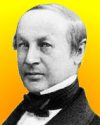 | The principal result of my investigation is that a uniform developmental principle controls the individual elementary units of all organisms, analogous to the finding that crystals are formed by the same laws in spite of the diversity of their forms. |
| Before you look at today's web page, see if you can answer some of these questions about the events that happened on this day. Some of the names are very familiar. Others will likely stump you. Tickle your curiosity with these questions, then check your answers on today's web page. | |
| Births | |
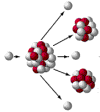 | Richard Brooke Roberts, born 7 Dec 1910, was an American biophysicist who contributed most to the discovery of “delayed neutrons” that are crucial in the operation of a fission reactor which Without the margin of safety provided by the delayed neutrons, nuclear reactors might not be practical at all. What are delayed neutrons? |
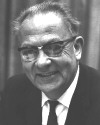 | On 7 Dec 1905, Gerard Peter Kuiper was born, a Dutch-born American astronomer. The Kuiper Belt is so-named after his original suggestion of its existence outside the orbit of Neptune before it was confirmed as a belt of small bodies. He discovered the moon Miranda. Miranda is a moon of which planet? |
| Deaths | |
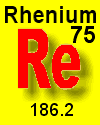 | Walter Karl Friedrich Noddack (1893-1960) was a German chemist who discovered a new element (Jun 1925) in collaboration with his wife Ida Tacke. Since 1922, he had searched for undiscovered elements. After three years, the careful fractionation of certain ores yielded the new element, a rare heavy metallic element that resembles manganese. Named after a river in his homeland, it was the last stable element to be discovered. What is this element? |
| Events | |
 | On 7 Dec of a certain year, the first execution by lethal injection in the U.S. was performed on Charles Brooks in Texas. Several intravenous drips provide an anesthetic, followed by a chemical to paralyse breathing, and another to stop the heart. In which decade was this execution? |
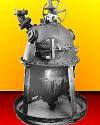 | On 7 Dec 1909, Leo Baekeland received the first U.S. patents for a thermosetting artificial plastic - “an improvement in methods of making insoluble condensation products of phenol-formaldehyde” - commonly referred to as the “heat and pressure” patent. This gave birth to the modern plastics industry. What name did he give this plastic? |
 | On 7 Dec 1889, a Scottish inventor, was issued a patent for his pneumatic tyre. In 1887, when his 9-yr-old son complained of the rough ride he experienced on his tricycle over the cobbled streets of Belfast. His name is still in use by a manufacturer of tyres. Can you name this inventor? |
Fast answers for the previous newsletter for December 6: cryolite, Greenland • Law of Combining Volumes - that when gases combine their relative volumes bear a simple numerical relation to each other • telegraph industry • carbon dioxide • graphite pencil • decade including the yeat 1906, from a hydrogen balloon • He was in Europe, where the transit happened after sunset..
 If you enjoy this newsletter, the website, or wish to offer encouragement or ideas, please send feedback by using your mail reader Reply button.
If you enjoy this newsletter, the website, or wish to offer encouragement or ideas, please send feedback by using your mail reader Reply button. Your click on a Facebook, StumbleUpon, or other social button on the site webpages is also a welcome sign of appreciation. Thank you for using them.
© This newsletter is copyright 2019 by todayinsci.com. Please respect the Webmaster's wishes and do not put copies online of the Newsletter — or any Today in Science History webpage. (If you already have done so, please remove them. Thank you.) Offline use in education is encouraged such as a printout on a bulletin board, or projected for classroom viewing. Online, descriptive links to our pages are welcomed, as these will provide a reader with the most recent revisions, additions and/or corrections of a webpage. For any other copyright questions, please contact the Webmaster by using your mail reader Reply button.
--
If you do not want to receive any more newsletters, Unsubscribe
To update your preferences and to unsubscribe visit this link
Executive Real Estate Business Class
-
"It was like a man with wings. It wasn't like anything you'd see on TV or in a monster movie." ...
About the publisher
Search This Blog
Blog Archive
-
▼
2020
(1542)
-
▼
December
(121)
- On This Day for December 31 - Ottawa made capital ...
- Newsletter for Thursday 31 December.
- December 31: The Battle of Quebec, a Rainy Day in ...
- All That's Interesting's 10 Most Popular Stories O...
- On This Day for December 30 - Union of Soviet Soci...
- Newsletter for Wednesday 30 December.
- December 30: Creation of the USSR, the All India M...
- Know Better in 2021
- On This Day for December 29 - U.S. annexation of T...
- Newsletter for Tuesday 29 December.
- December 29: On This Day in History
- The Best of HISTORY This Week
- The 10 Best History Uncovered Articles Of 2020
- On This Day for December 28 - Westminster Abbey op...
- Newsletter for Monday 28 December.
- December 28: Galileo Observes Neptune, Harriet Tub...
- The death of Thomas Becket | The history of New Year
- On This Day for December 27 - Dutch transfer of In...
- Newsletter for Sunday 27 December.
- December 27: On This Day in History
- On This Day for December 26 - Indian Ocean tsunami...
- Newsletter for Saturday 26 December.
- December 26: 1st Spanish Settlement in the New Wor...
- The Anti-Santa Who Takes Naughty Kids To Hell, The...
- On This Day for December 25 - Christmas celebrated...
- Newsletter for Friday 25 December.
- December 25: Andrew Johnson's Christmas Pardon, Ce...
- On This Day for December 24 - Treaty of Ghent, Joh...
- Newsletter for Thursday 24 December.
- December 24: The Treaty of Ghent, Author Stephenie...
- Demystified Video: Why Is Christmas in December?
- On This Day for December 23 - Aleksander Kwaśniews...
- December 23: Van Gogh's Madness, the Partition of ...
- On This Day for December 22 - Alfred Dreyfus sente...
- Newsletter for Tuesday 22 December.
- December 22: An Impenetrable Fortress Falls, the 1...
- On This Day for December 21 - Radium discovered by...
- December 21: The Soviet Union Ends, Life in the Tr...
- A history of Christmas – from Oliver Cromwell to V...
- On This Day for December 20 - Macau made an admini...
- Newsletter for Sunday 20 December.
- December 20: US Buys Louisiana, the Viet Cong and ...
- On This Day for December 19 - Articles of impeachm...
- Newsletter for Saturday 19 December.
- December 19: On This Day in History
- The Soviet Executioner Who Killed 7,000 Poles One ...
- On This Day for December 18 - Slavery abolished in...
- Newsletter for Friday 18 December.
- December 18: The Yuan Dynasty Begins, Nuclear Powe...
- The perfect gifts for the curious kids in your lives!
- On This Day for December 17 - Flight of the Wright...
- Newsletter for Thursday 17 December.
- December 17: Tamerlane Sacks Delhi, the Wright Bro...
- Demystified: Do We Really Use Only 10 Percent of O...
- On This Day for December 16 - Boston Tea Party, Ja...
- Newsletter for Wednesday 16 December.
- December 16: A Boston Tea Party, the Battle of the...
- Haunting Kennedy Assassination Photos That Most Pe...
- On This Day for December 15 - Premiere of Gone wit...
- Newsletter for Tuesday 15 December.
- December 15: Vandals, Mongols and the US Bill of R...
- On This Day for December 14 - Roald Amundsen's arr...
- Newsletter for Monday 14 December.
- December 14: Amundsen and Scott's Epic Race to the...
- On This Day for December 13 - New Zealand sighted,...
- Newsletter for Sunday 13 December.
- On This Day for December 12 - U.S. Supreme Court d...
- December 12: A Generous Manhattan Gift, Bush v. Go...
- How eels powered the medieval economy | The histor...
- 55 Of History's Creepiest Pictures And Their Distu...
- On This Day for December 11 - Abdication of King E...
- Newsletter for Friday 11 December.
- December 11: The Mayflower Pilgrims, an Abdication...
- UPDATED: Britannica Year in Review: Story of the Year
- Britannica Year in Review: Story of the Year
- On This Day for December 10 - Encyclopædia Britann...
- Newsletter for Thursday 10 December.
- December 10: Spanish-American War, Edward VIII and...
- Laurence Fishburne Hosts a New HISTORY Digital Series
- Demystified: What's the Difference Between Whiskey...
- On This Day for December 9 - Lech Wałęsa elected p...
- Newsletter for Wednesday 9 December.
- December 9: Belisarius Enters Rome, Lech Wałęsa El...
- What will you discover this Thursday?
- On This Day for December 8 - John Lennon fatally s...
- Newsletter for Tuesday 8 December.
- December 8: Lincoln's Amnesty Proclamation, the US...
- On This Day for December 7 - Pearl Harbor attack, ...
- Newsletter for Monday 7 December.
- December 7: Birth of Plastics, Infamy in Pearl Har...
- History books of the year | Historical board games...
- On This Day for December 6 - Irish Free State esta...
- Newsletter for Sunday 6 December.
- December 6: Mongols Destroy Kiev, Slavery Abolishe...
- On This Day for December 5 - Witchcraft condemned ...
- Newsletter for Saturday 5 December.
- December 5: Gold Rush in California, End of Prohib...
- HNN Newsletter: You are now unsubscribed
- 10 Medieval Execution Methods That Are The Definit...
- On This Day for December 4 - Ivan the Terrible pro...
-
▼
December
(121)
-
Blogroll
-
About
HistoryFact










0 comments:
Post a Comment